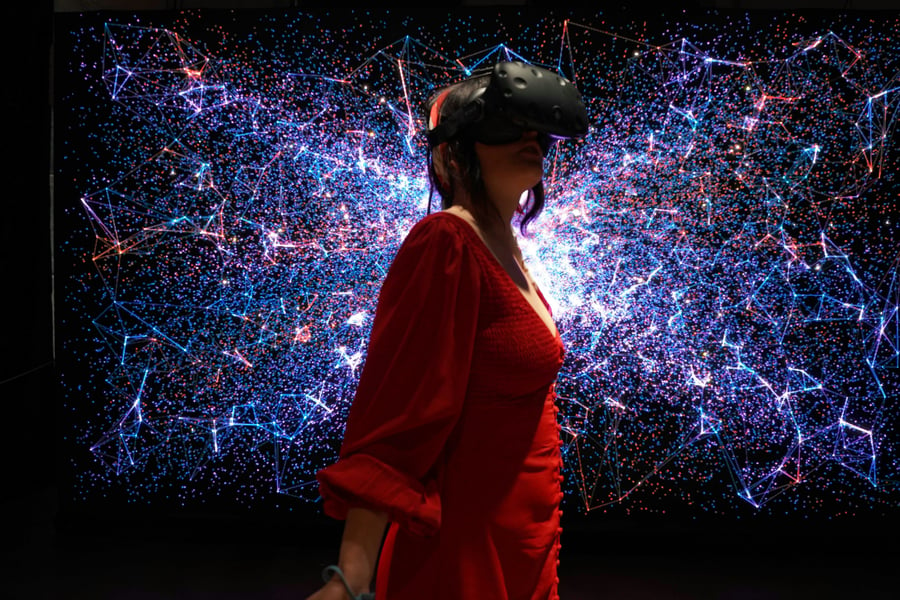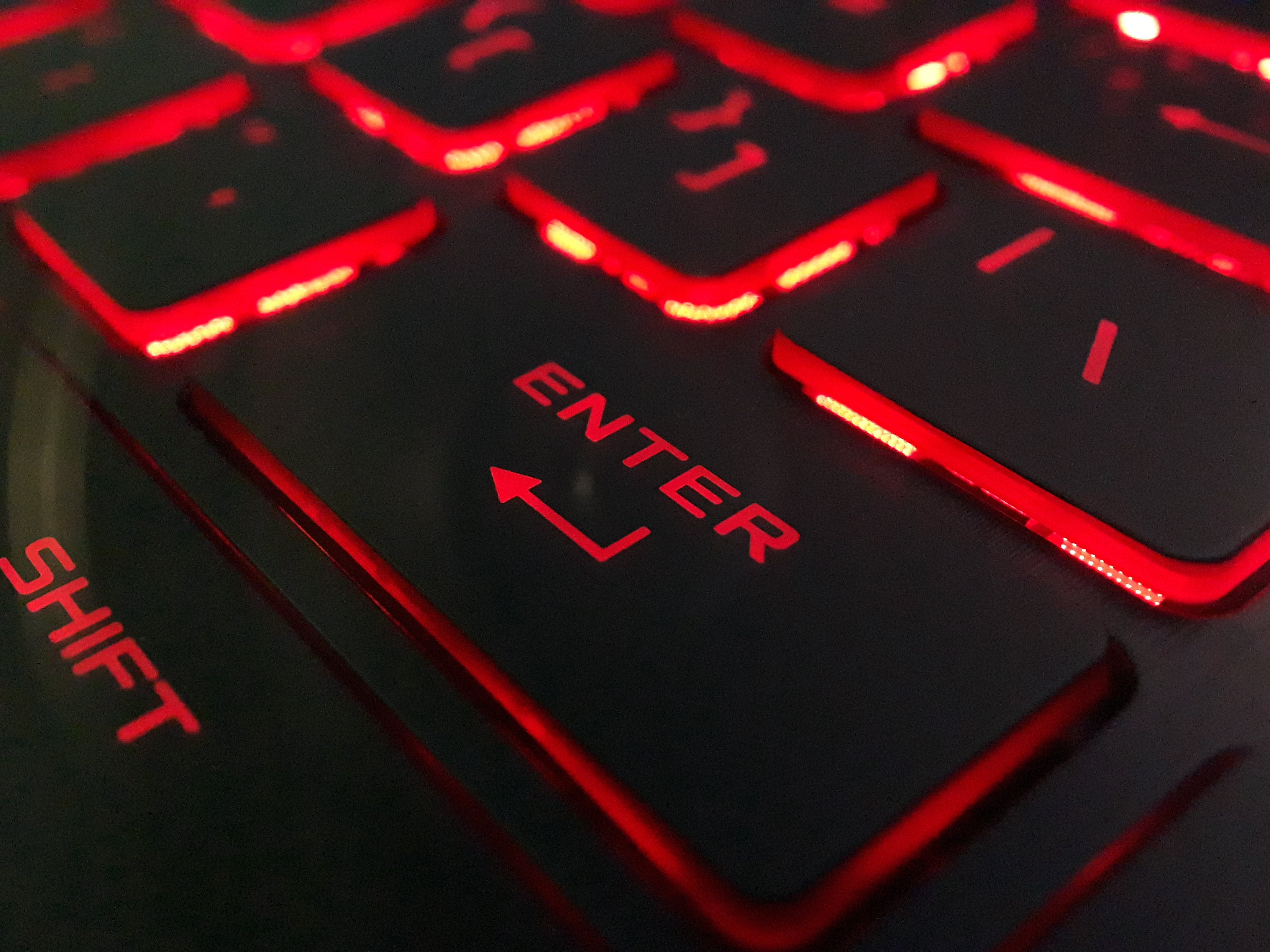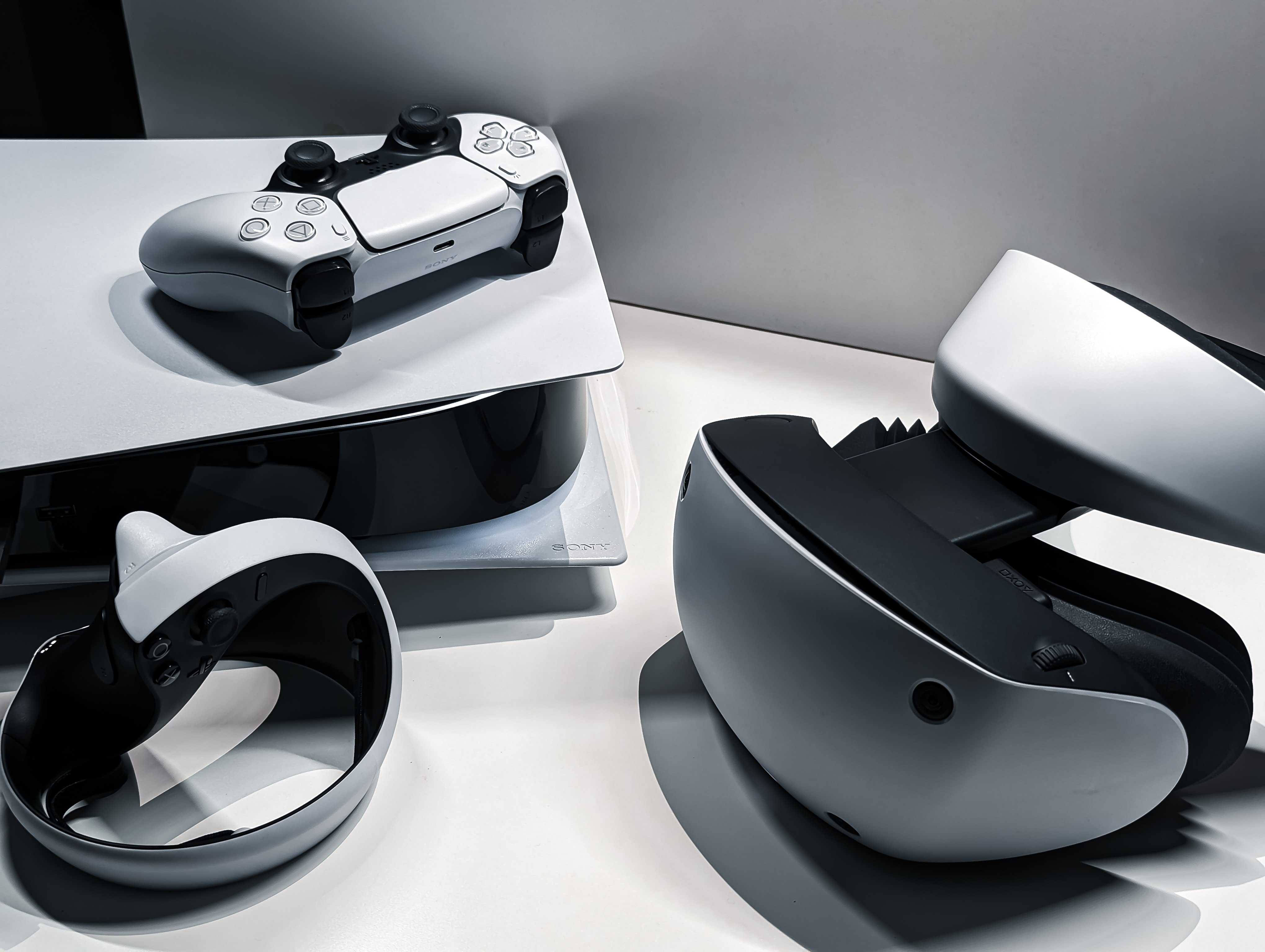Why VR hasn't entered the mainstream, and what can be done about it?
These are the questions that Bryter Insight Consultant Rob Jones and Insight Analysis
Michelle Martinez are exploring,
Introduction
We know that VR is nothing new to gaming, with Sega's first headsets showcased as far back as 1991 (long before the writers of this article were born). However, in more modern times, we are still yet to see mass-market adoption. This is despite companies such as META spending around $36 billion on its metaverse and VR businesses since 2019.
In fact, in 2023, overall sales of VR headsets (and augmented reality glasses) in the U.S. dropped nearly 40% to $664 million. This drop outlines the current challenge facing tech companies to bring consumers into this brave new virtual world.
Despite the drop in sales, headsets continue to be refined, with the latest from META, the Quest 3, released in late 2023, and Apple about to enter the virtual space with their Vision Pro in February 2024 for a cool $3,499.
So, as expert researchers in all things tech and gaming at Bryter, we wanted to delve deep. We set out to explore what might be holding VR gaming back from entering the mainstream and how gamers really feel about it.
So, what did we do?
Bryter surveyed a group of around n=1,400 nationally representative US gamers to understand current experiences and perceptions of VR. We delved into their likelihood to purchase a headset in the future, the rationale behind purchase decisions, and general attitudes towards VR gaming. We also included several VR-specific questions in our annual Female Gamers study.
Following this initial quantitative exploration, we conducted in-person playtests and in-depth interviews to dive deeper into UK gamers’ thoughts on VR, using two of the most popular genres. The combined research methodology allowed us to achieve a more rounded and comprehensive perspective.
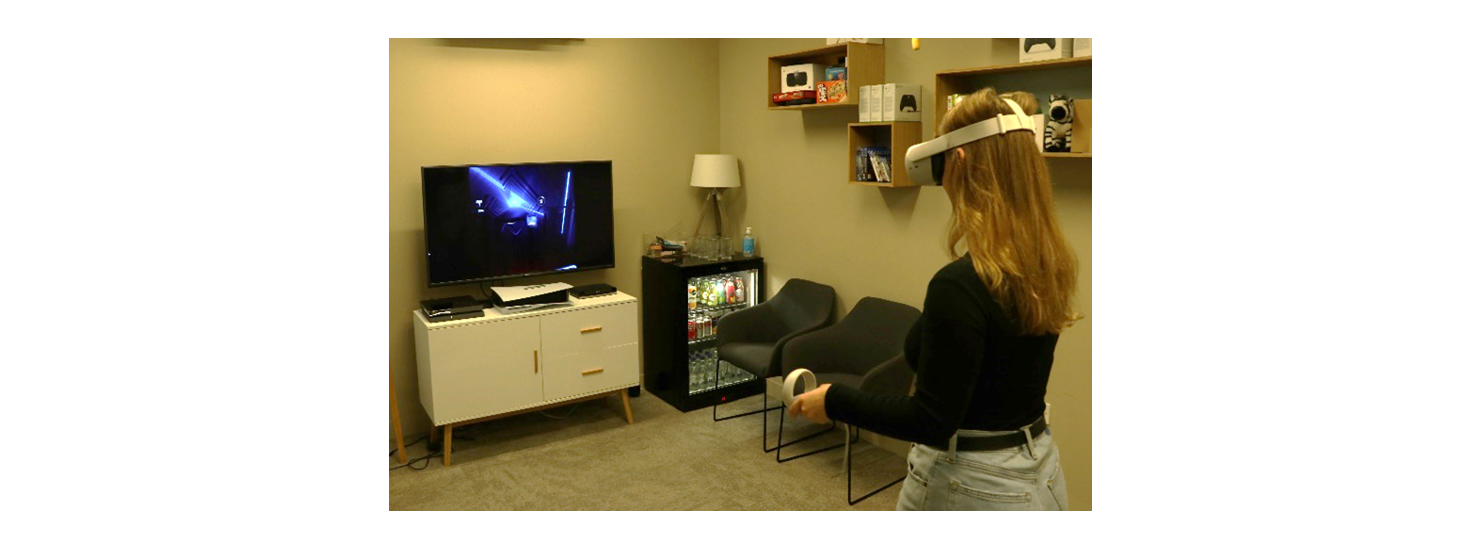 Our in-person VR playtest in action!
Our in-person VR playtest in action!
Current headset owners
In our quantitative research, we found that 22% of adults in the US currently own a VR headset, which is higher than we initially expected. This shows an interest in the technology, and gamers are curious to find out more.
Our Female Gamers study also brought to light that those aged 35-44 are more likely to own headsets. Around 27% of US female gamers in this age group have a headset. This high level of ownership is likely because of a higher disposable income compared to young gamers. But we also believe players purchased because of the potential social benefits. 52% of our surveyed gamers agreed that ‘it’s most fun playing VR with friends or family’. So, we know that showcasing the social benefits of VR can be a key leaver in driving players to purchase.
Clear interest in purchase

So, if nearly a quarter of adults in the US currently own a headset, how many are actually interested in upgrading or buying a headset for the first time? Well, around 40% suggest they would be interested in purchasing one in the next year. This is despite the fact that nearly 40% have never tried a VR headset/game before.
It seems variety is not only the spice of life but also of gaming! In our in-person interviews, players outlined they were curious to try something different from their regular gaming routine.

The idea of wearing a headset and being able to wade through a forest or be in the middle of a live battlefield was highly intriguing. Many thought it had the potential to take gaming to new heights, even before trying for the first time. So, it’s important to show gamers how VR is different from their current experiences to encourage headset purchases.
Why hasn’t VR fully taken off?
Current pricing levels
There are a number of reasons holding back gamers from purchasing headsets; the largest concern we found was cost. The META Quest 3 is just under £500 currently, which is a significant investment for any gamer, especially with the range of platforms available if they are looking to upgrade or diversify their gaming experience.
Manufacturers and developers need to be more creative in terms of their marketing and products to overcome this price barrier, especially amongst casual gamers who need a compelling reason to purchase a headset. Consider offering a range of headsets at different price points or using bundles with VR games to give gamers more value from their purchase.
Awareness of game libraries
Currently, VR game libraries are viewed as a work in progress, and gamers often don’t know what is available. During our interviews, gamers were frequently unable to pick out any specific VR games or ones they would like to try.
Contributing to this may be the lack of awareness of franchises making VR-specific titles. This is also highlighted in our survey, with 57% agreeing that ‘they want to see more developers making regular games into VR ones’.
However, franchises with large and loyal fanbases (e.g. Horizon and Assassins Creed) have already created VR titles, but few gamers are aware of them. So, it’s down to franchises to push awareness of their dedicated VR games, and this has the potential to really boost overall VR adoption.

Unknowns of VR
As mentioned earlier, 40% of US gamers have never tried VR headsets or games before. This means consumers are often unsure about what is required or how a VR headset works. Do they need a high-end PC/laptop to play? Can they play just with a headset alone? How do the controls work? How much space do they need? Will they get motion sickness?
All of these are concerns which are often missed or are not clear in existing VR advertisements and can be improved.
You’ll have to try it!
Offering a first-hand experience of VR is an excellent way of allowing gamers to get more familiar with the headset, how it all works and the options/games available. However, we cannot rely on gamers with headsets already to do this with others. Instead, retailers should aim to offer designated spaces for potential customers to try VR.
This is similar to what John Lewis & Partners have done previously, where they trialled a VR experience to enable customers to see what furniture will look like in their home before making a purchase. We believe this can be expanded to showcase the potential of gaming.
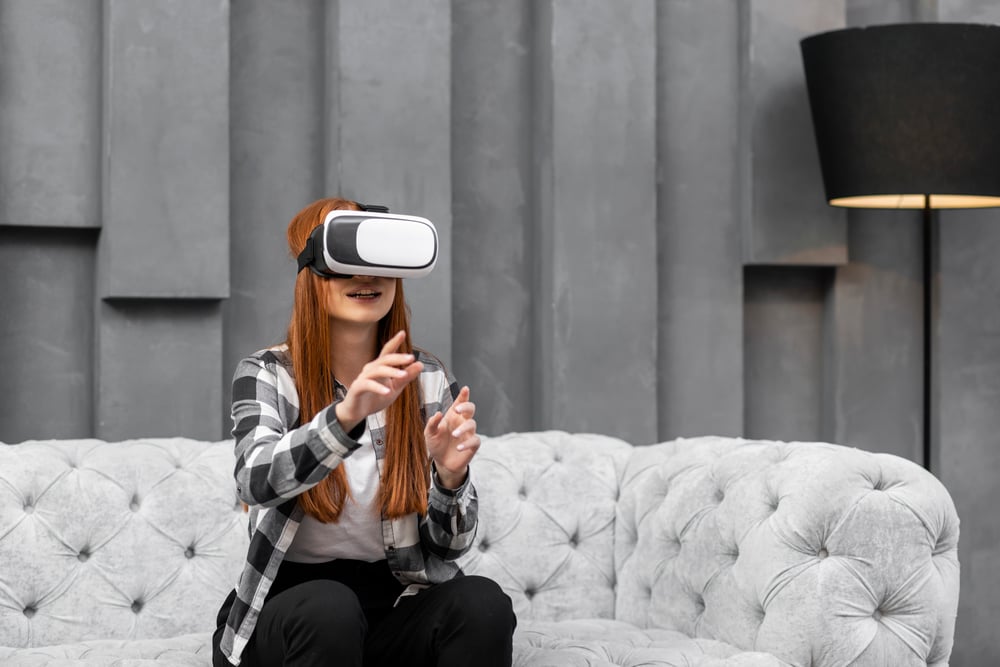
The layout of these spaces is crucial; these need to replicate a living area to create the feeling of being at home and with enough room to remove any concerns about knocking into display units or other people! Allowing gamers to experience the headset and the controls and playing a game will help remove a number of worries.
It is also vital that retail staff have tried VR themselves to pass their experience on to others and to guide them through a trial experience safely. As we saw in our playtests, the experience is quite different from anything many have tried before. So, a guiding and knowledgeable voice can be reassuring and helpful for consumers to make a purchase.
Finally, one of the key selling points for a VR headset is the immersion of it and, as our gamers pointed out, getting to experience that first-hand. So, creating an environment where gamers feel like they have been transported to another world is key to getting them to try and hopefully buy!

How to boost VR adoption?
In summary, there are a number of areas we believe have the potential to improve overall VR takeup:
- Showcase the social benefits of VR
- Highlight the difference in gaming experience to console, PC and mobile
- Offer a range of headsets at different price points
- Bundle up headsets with games to increase the feeling of value for money
- Boost overall awareness of VR titles currently available
- Franchises need to further advertise their VR-specific titles
- Alleviate practical concerns about VR in marketing
- Consider dedicated retail spaces for gamers to try VR
Additional information
For further information about our VR study, conduct your own playtesting or anything else mentioned in this article. Please get in touch with Jenny McBean (jenny.mcbean@bryter-global.com) or Rob Jones (rob.jones@bryter-global.com); we’d love to hear from you
Our work provides strategic, evidence-based guidance from the initial concept and market sizing through to post-launch assessments.
Contact us today to learn more about how we can assist you in creating a market research plan that provides useful insights for your gaming project.
